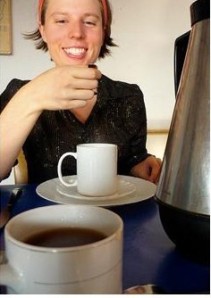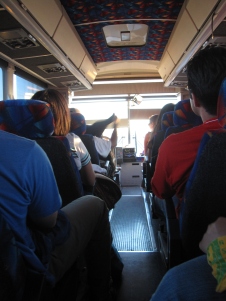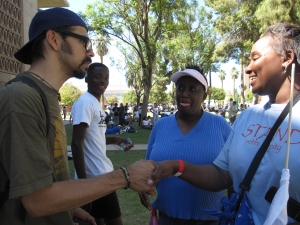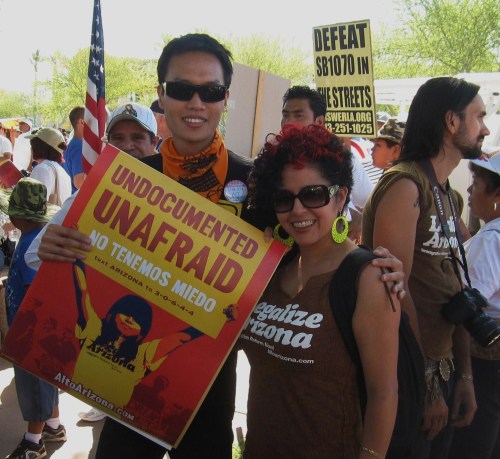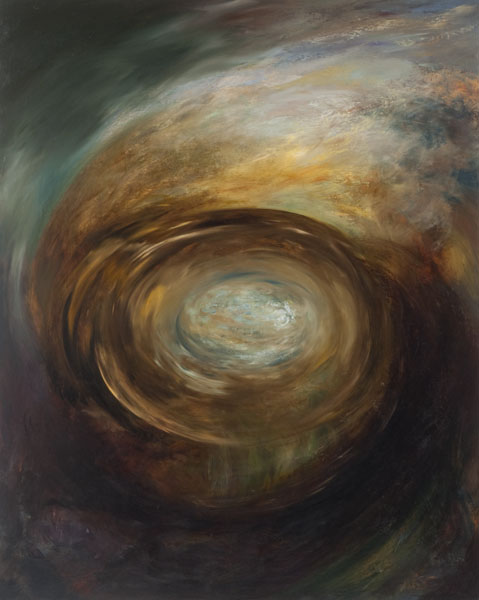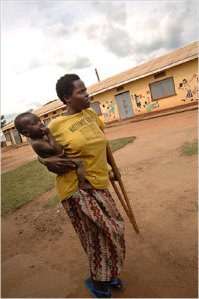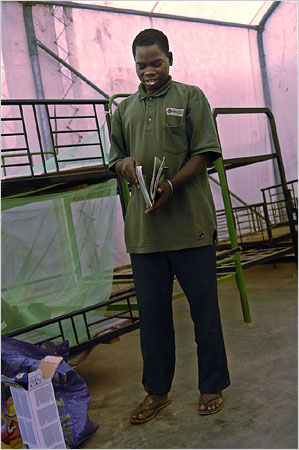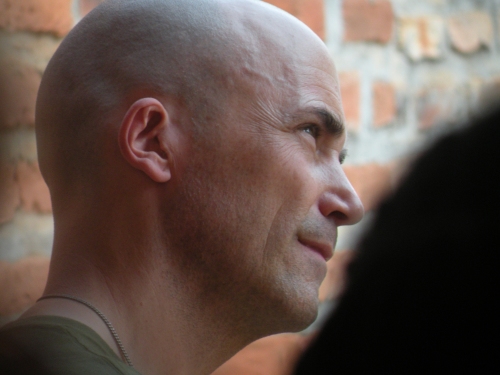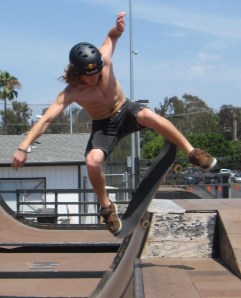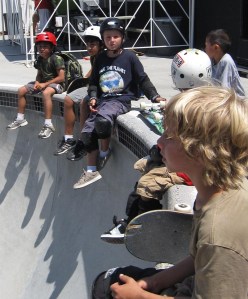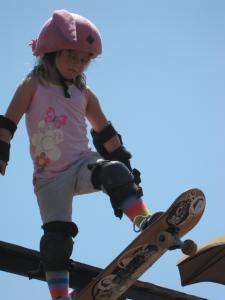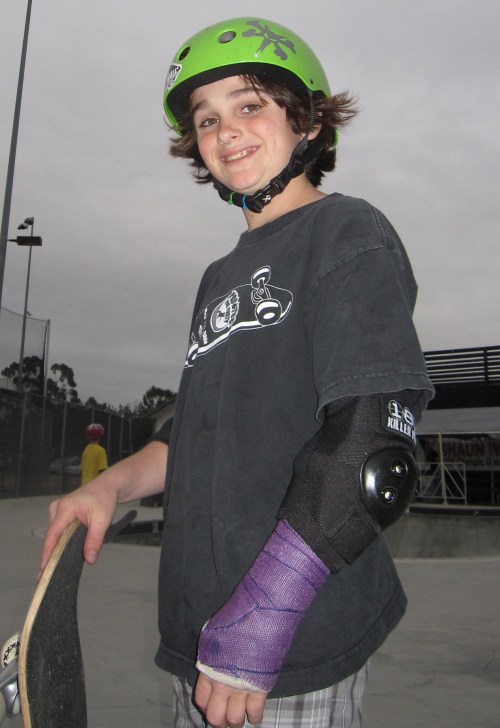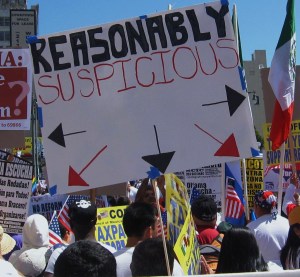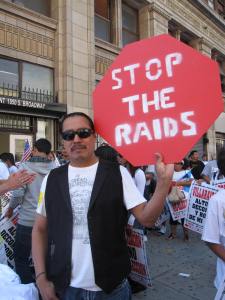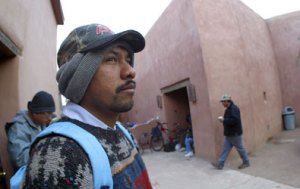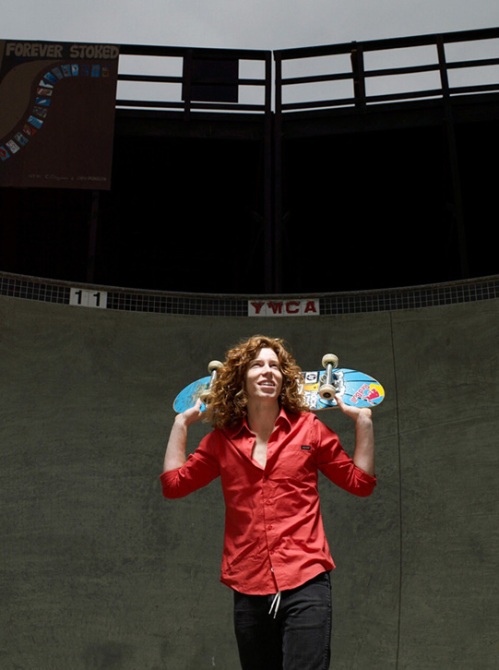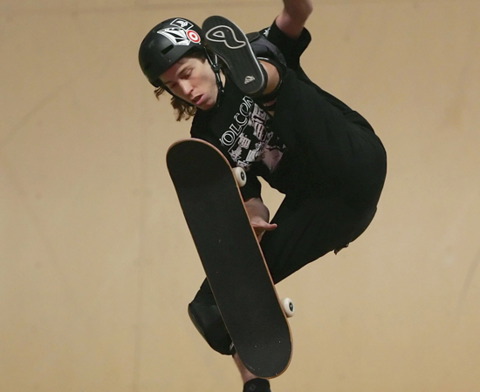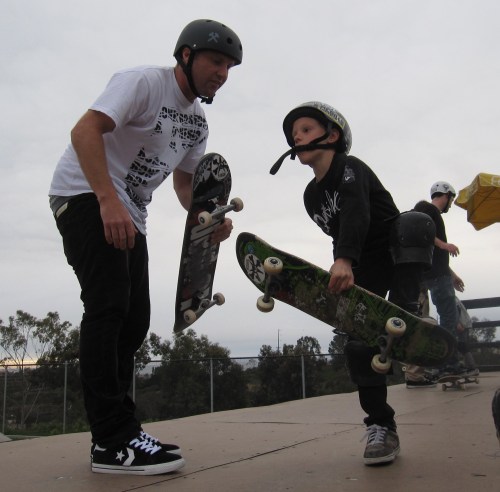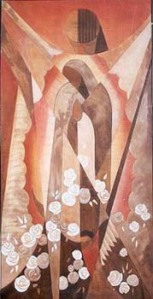
"Mi Madre de Los Angeles" Fabian Debora
by Lydia Breen
Fabian Debora grew up in the Boyle Heights neighborhood of East Los Angeles. He survived gang violence, drug addiction and prison. Now he works as a substance abuse counselor at Homeboy Industries, helping at-risk and formerly gang-involved youth. Debora’s art, which is largely based on his life experiences, has opened up new worlds for him. It is also inspiring the young people he works with to pursue their own dreams.
Debora’s paintings are on display at “Canvassing Peace” , an exhibit sponsored by the American Friends Service Committee ( on view now through Augstu 12, 2010 at AFSC’s regional headquarters in Los Angeles, 3rd floor, 634 South Spring Street).
—————
Artist Fabian Debora calls Los Angeles a territorial place. “There are guidelines you have to follow, places you can’t go,” he says.
Growing up, the walk from home to school felt like it was littered with landmines. “There were eight gangs in my neighborhood,” he says. “It was like it was infested. “
He wasn’t looking for trouble. All he wanted to do was his art. He explains: “When I left the projects where I lived, they would ask where I was from. I’d say, ‘I don’t bang.’”
It didn’t help.
“The place I lived, the way I dressed that automatically placed me in a gang,” he said during a recent interview in his office at Homeboy Industries. “Once I walked out of the projects, it was basically like a free-for- all.”
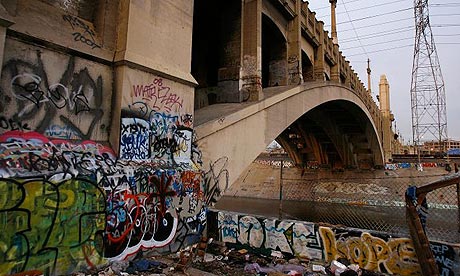
Boyle Heights bridge credit: static.guim.com
The river was his refuge. He used to ditch school and spend hours there. The cement walls were his canvass, a place to experiment with graffiti and mural art. He made friends with homeless people who lived under the bridge. They gave him advice (get an education) and he gave them his bag lunches.
On the way home he got hassled all over again. “I was trying to stay out of trouble, but it was hard,” he said. “My dad was a heroin addict who was in an out of jail. I couldn’t look to him for protection. And my mom had to work two jobs.”
Eventually, he gave in to the pressure and joined a gang. But he kept on doing his art, adding tattooing to his repertoire.
Home life was tense. “My mother would tell me: ‘You have a problem.’ I told her she didn’t understand. I was very rebellious and had a lot of anger. We were first generation Mexicans,” he says. “I wondered why I was suffering so much, why my father was an addict. I took it out on my mother and continued to blame her. I told her she should never have had me. I even tried to commit death.”
His grandmother was “the spine of the family.” An ardent devotee of the Virgin of Guadalupe, Debora recalls: “She told me the Virgin would always watch over me. This was my first teaching.”

Artist Fabian Debora says gang members are more than the sum of their mistakes.
Tattoos and T-shirts with the Virgin’s image have been criticized as “gang-related apparel that has been banned at some schools. Debora says that misses the point: “ Outsiders who see all these cholos with tattoos of the Virgin Mary – that’s not a gang thing. A homeboy wears the Virgin for protection due to the mess he is in. It’s like he is saying: ‘I’m out here in the street. I am out here crying.” (See video, below, of Debora applying a tatoo of the Virgin of Guadalupe.)
“Just because we are in a gang, that doesn’t me we have no morals,” he says. “The Virgin holds a lot of respect because of what we were taught by our mothers and grandmothers.”
He says gang members are more than the sum of their mistakes: “We wind up getting judged by the wrong decisions we make. It doesn’t mean we don’t have morals. It doesn’t mean we have the absence of hope, or that we don’t want to be protected.”
He concedes that a homeboy wearing the image of the Virgin of Guadalupe doesn’t always send the right message: “You have guys who glamorize it in a way that can cause harm. The minute you disrespect the Virgin Mary, you are going against everything she believes.”
By 1994 he began to remove himself from gang life. Then he spent five years doing Methamphetamine. “I was hurting everyone,” he says.
Looking back, he sees how his past life – the violence, Meth addiction, stints in prison and suicide attempts – were especially hard on his mother: “I realize now what I put her through.”
A failed attempt to kill himself was the turning point: “I was smoked out, loosing my mind, loosing my pride, my dignity. I told myself I didn’t want to live anymore.”
High on Meth, paranoid that the police were after him, he ran out of his mother’s house, and kept on running, through the projects to a park, where even a lake didn’t stop him.
“I ran into the water, got covered with seaweed and kept on going. I jumped over the freeway wall to the other side.” When he landed he bit his tongue – hard. Bleeding profusely, he ran on to the highway, into the path of an on-coming suburban vehicle.
“I said to myself: ‘This is it.’ ” His sense of reality altered, he heard a whirring noise: “ It was like I was in slow motion. I was ready to feel the impact of the truck. Then I remembered: ‘My kids!’”
The vehicle missed and Debora kept on running. He reached the median strip and collapsed in a heap. As the vehicle disappeared in the distance, he sensed his life was about to change:
“I felt like the truck took all that disease away. The sounds returned, the sound of birds and the wind. Then the police came. They tried to call me to come to them, but I ran away back to the projects.”
Debora wound up at Dolores Mission, the school and church where he grew up. But he was not supposed to be there, it wasn’t safe for him.
“I called my mother to come pick me up,” he said. “She started yelling at me for being where I was. I told her: ‘Mom, I almost got killed today.’ She got very quiet. ”
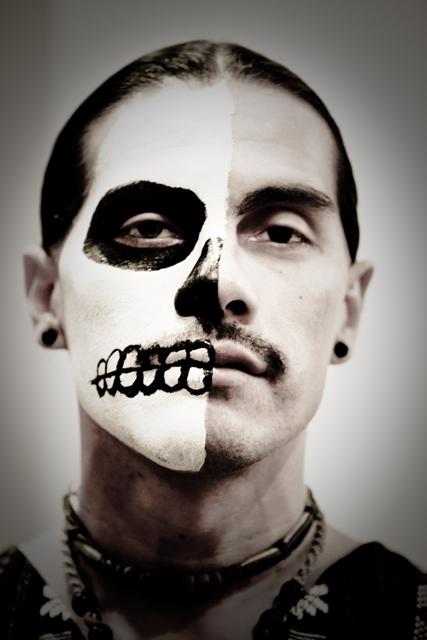
Debora: "I looked like a zombie, a calavera"
Debora sets the next scene as if he was considering it for a future painting: “Can you image a mother rolling up in her car, seeing her son nearly half-dead? It was like the Virgin when she came to help her own son. My tongue was hanging out from where I bit it. I was full of blood. I was wet from the lake. I looked like a zombie, like a calavera.”
Before driving away, his mother gave him an ultimatum: he had three days. After that, he’d have to go to rehab.
Fabain Debora spent the next six months in rehab. When he got out, Father Gregory Boyle, a priest he knew from Dolores Mission who now heads Homeboy Industries, gave him a job. It’s been three years now that he has worked as a trained substance abuse counselor and art instructor.
Debora’s brush with death on the highway had a lasting effect. “I became very spiritual,” he says. “I believe it happened for a reason.”
He gives a lot of credit for his recovery to his mother. “All that time my mother never gave up on me. She always tried to guide me. I have been sober now for approximately three years.”

The Virigin as Homegirl: "My Virgin of Mary in relation to Tonantzin" Fabian Debora
In his 2008 painting My Virgin of Mary in Relation to Tonantzin, Debora connects his old life with his new one. The top-left corner of the painting appears in black and white to symbolize the past. Also in the past, the cement under the Boyle Heights bridge, tagged with the names of friends who died in gang violence. (One his friends was shot in the head).
The corn in the painting represents the maize that used to be grown along the river by Indians before the area fell into the hands of Spanish colonialists. Debora added a totem-like statue of the Aztec earth goddess Tonantzin, an image that Spanish missionaries conflated with the Virgin of Guadalupe. (See Café Libre: “The Virgin as Spin-Mistress.”)

St. Juan Deigo with image of Virgin of Guadalupe
Debora explains: “The Catholics had to enslave the Aztec people to make them believe.

Feast Day of Virgin of Guadalupe, L.A. 2009
Debora says the fact that the Virgin of Guadalupe appeared before Don Juan, an impoverished Indian peasant, shows that she cares for and represents the people. “She is ‘the mother of Mexico’ a powerful icon for the Mexican people, a symbol of hope and strength. She ties in all the aspects of my beliefs.”
He says he likes using cultural images like the Virgin, the corn and the bridge in Boyle Heights because: “ They connect me; they help me stay focused. They help me be creative.”
Before it was put on display at the “Canvassing Peace” exhibit, The Virgin of Mary in relation to Tonantzin” was on view at Homegirl Café, where Debora used the painting as a way to talk to homegirls about “their power and beauty and their capacity for caring.”
He believes his art can help give young people confidence. By painting the Virgin as a homegirl, he was sending a message: “When a homegirl said to me that she liked that painting, I told her: ‘That can be you!’”

Preparing food at the Homegirl Cafe credit: latimes blog
“A lot of the homegirls have suffered from domestic violence. They’ve been demoralized by their man. Some of them loose their kids. Gangs use them as scouts to go into other neighborhoods…[They] don’t value them. I hope I can pave a path for [homegirls], tell them that education is powerful.”
“My art can have an impact on others. If it helps people see they aren’t alone, that’s a good thing. But it is first of all for me. When I paint, it’s therapy. I am trying to heal.”
Debora’s most recent work, Madre Frida, is a vibrant portrait of Frida Kahlo as the Virgin of Guadalupe. “ A lot of people respect both women,” he explains. “Both had a lot of pain. But at the same time, both were powerful. “
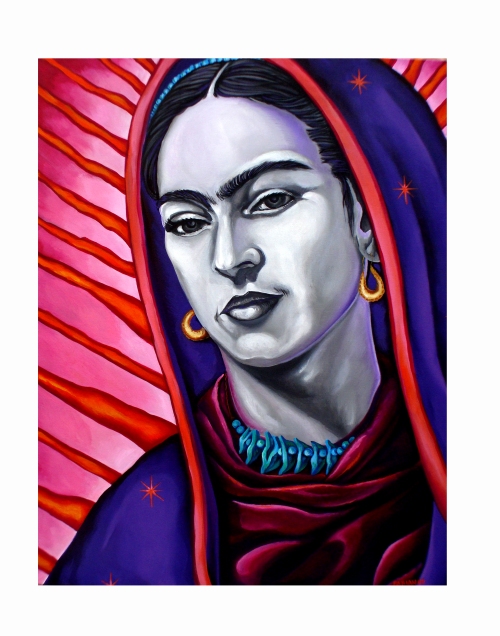
"Madre Frida" Fabian Debora
Throughout his difficulties, he says he always held on to his art: “It has been a life saver. Art gives me a sense of freedom. There are no boundaries. I can be myself. It has help me find a new form of identity”
Considering all the up’s and down’s he has been through, it is not surprising that an element of fatalism creeps into his thoughts:
“Now I’m focused, but that’s also where the fear comes. You expect tragedy to hit. I worry that something will happen that won’t allow me to succeed.”
But his vitality and his life story suggests that he has strong survival instincts and a capacity to use his art to heal.
He wants to go back to art school “for sustainability” and to learn new techniques. His dream is to become an animator and mark the events of his life in pictures.
In his life-sized 2009 piece Falling Star, Debora paints himself and his 18-month old daughter. (The 33-year old artist has five children: three boys, aged 10, 6 and 4 and two girls, aged 3 and 18 months.)
“In the painting I put her before me.” He says sometimes he looks into his daughter’s bright eyes and, thinking about all his own struggles, he worries about what lies ahead for her.
“She’s holding my heart in her hands. It’s hers.”

"Falling Star" portrait of the artist and his daughter

